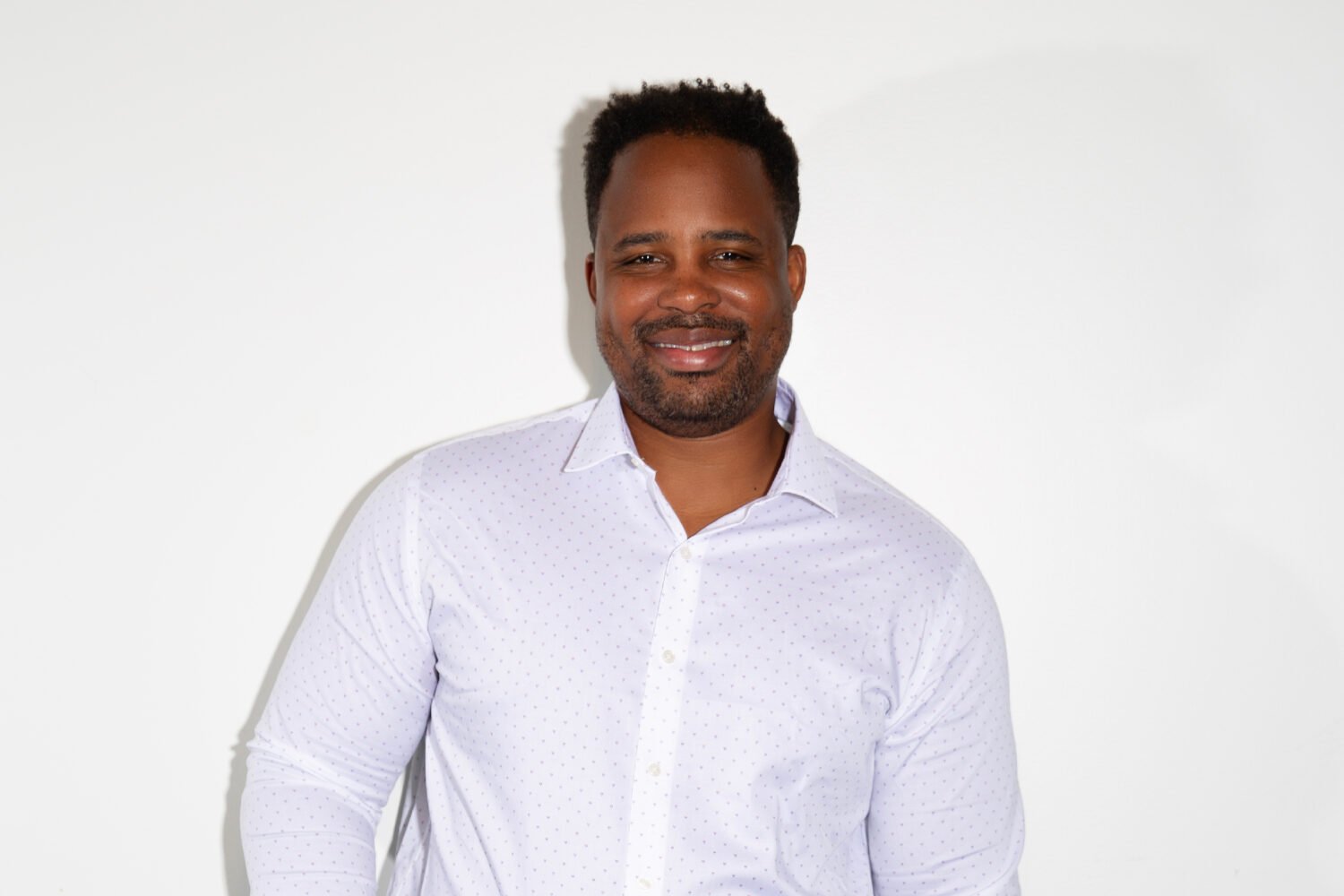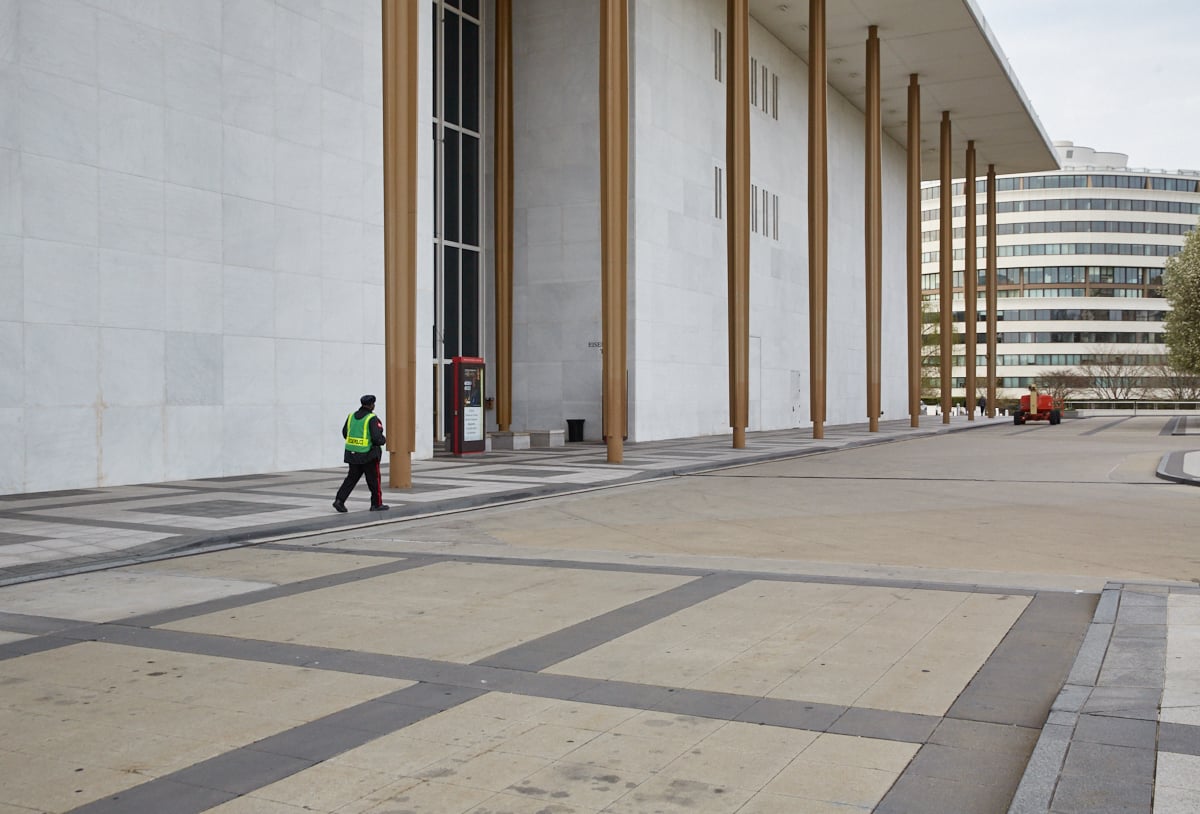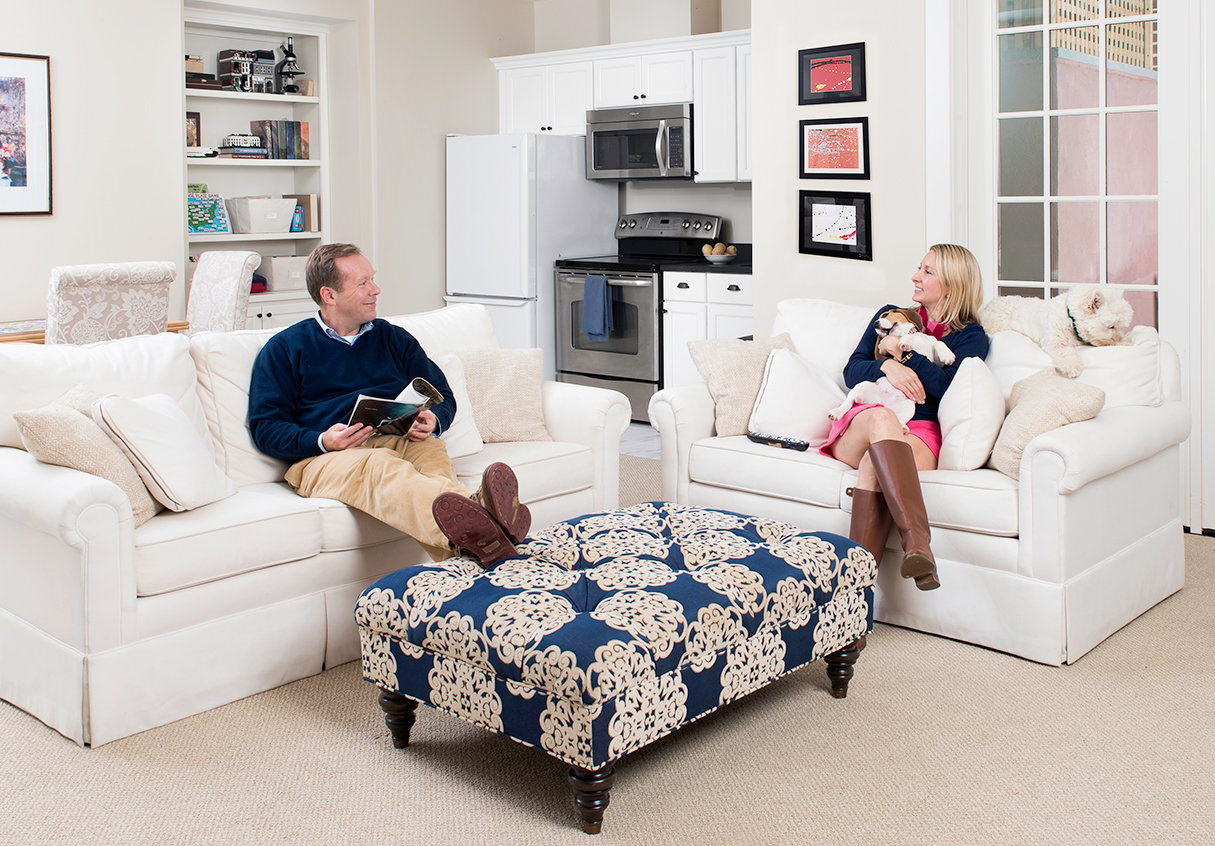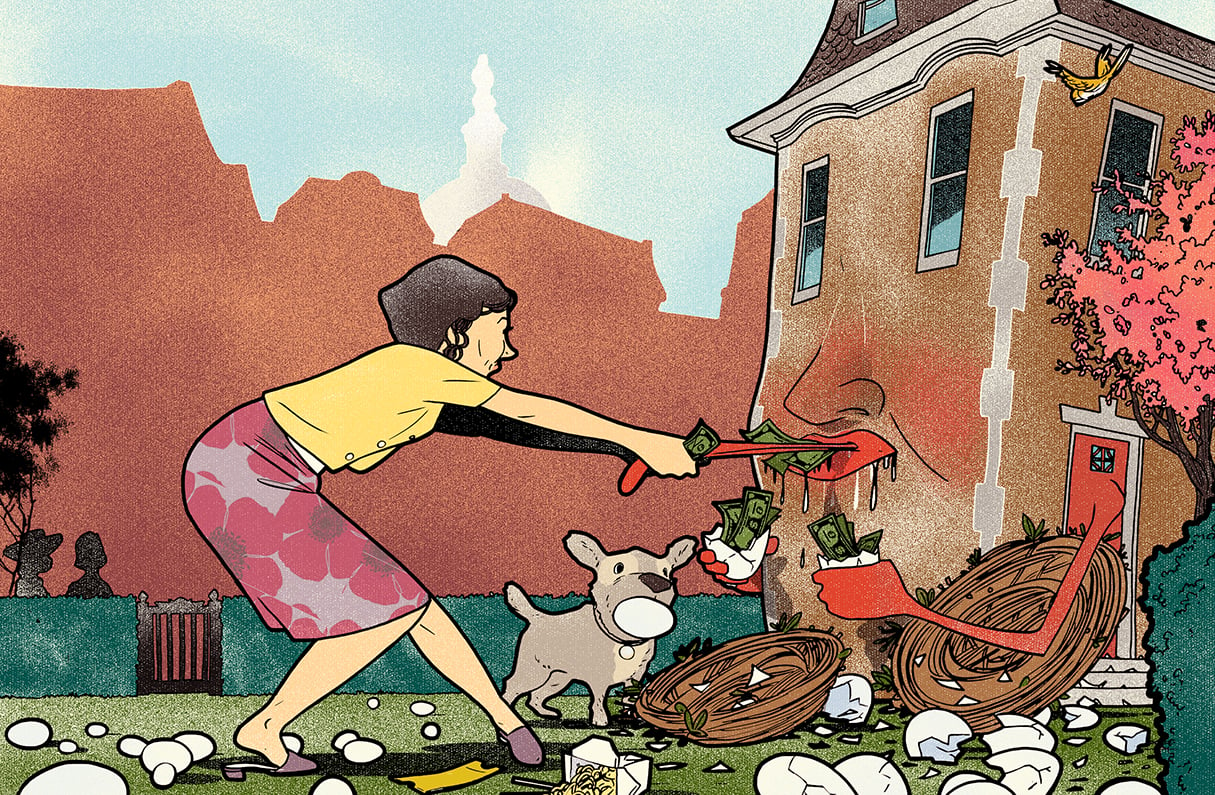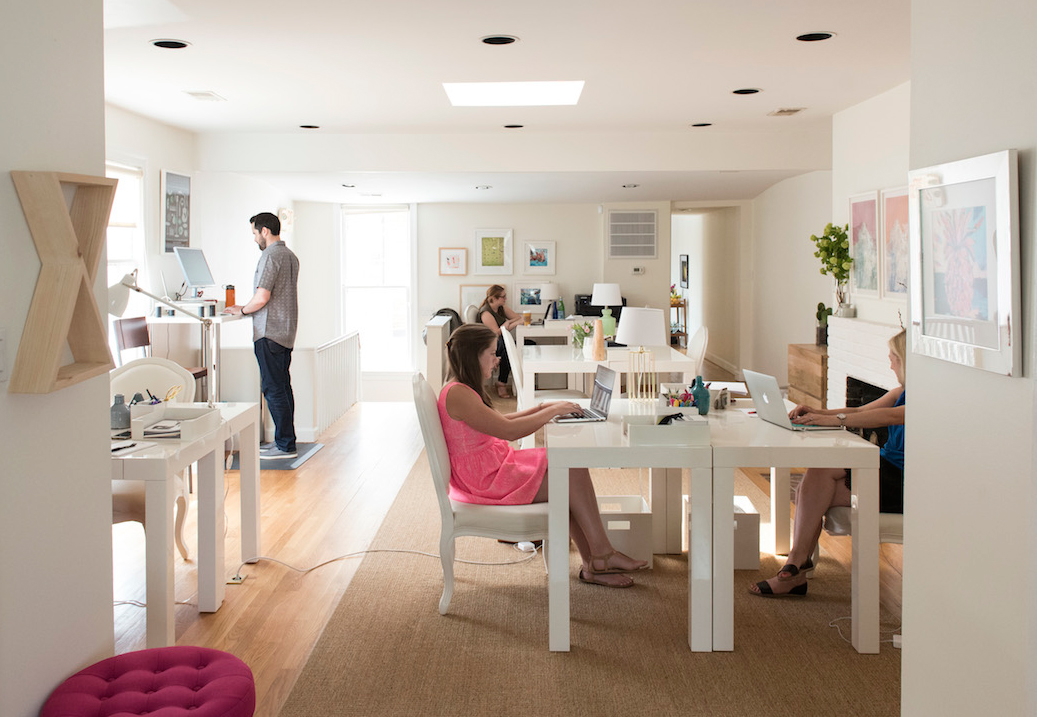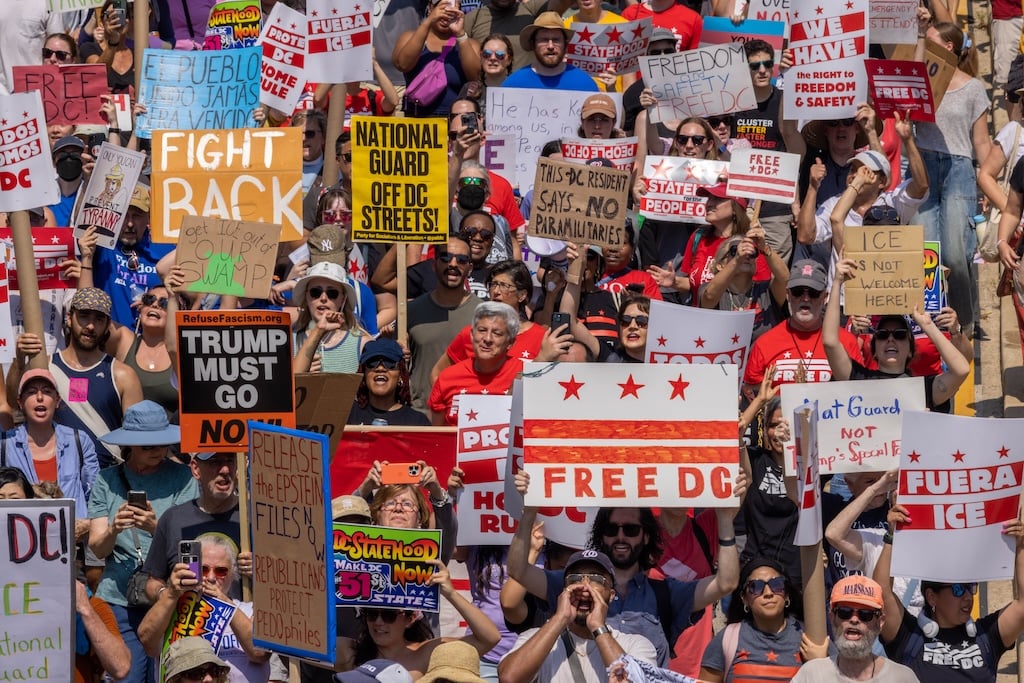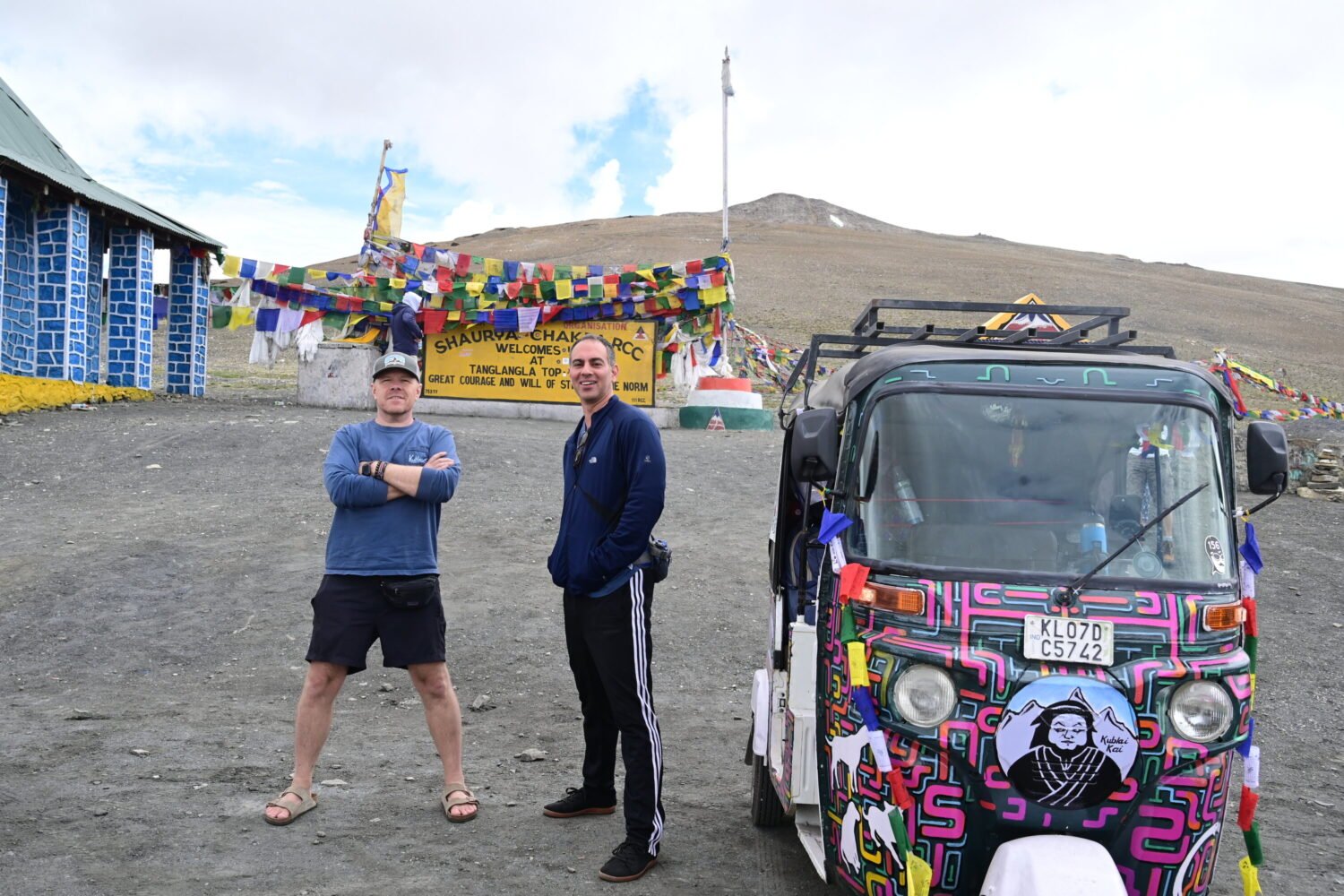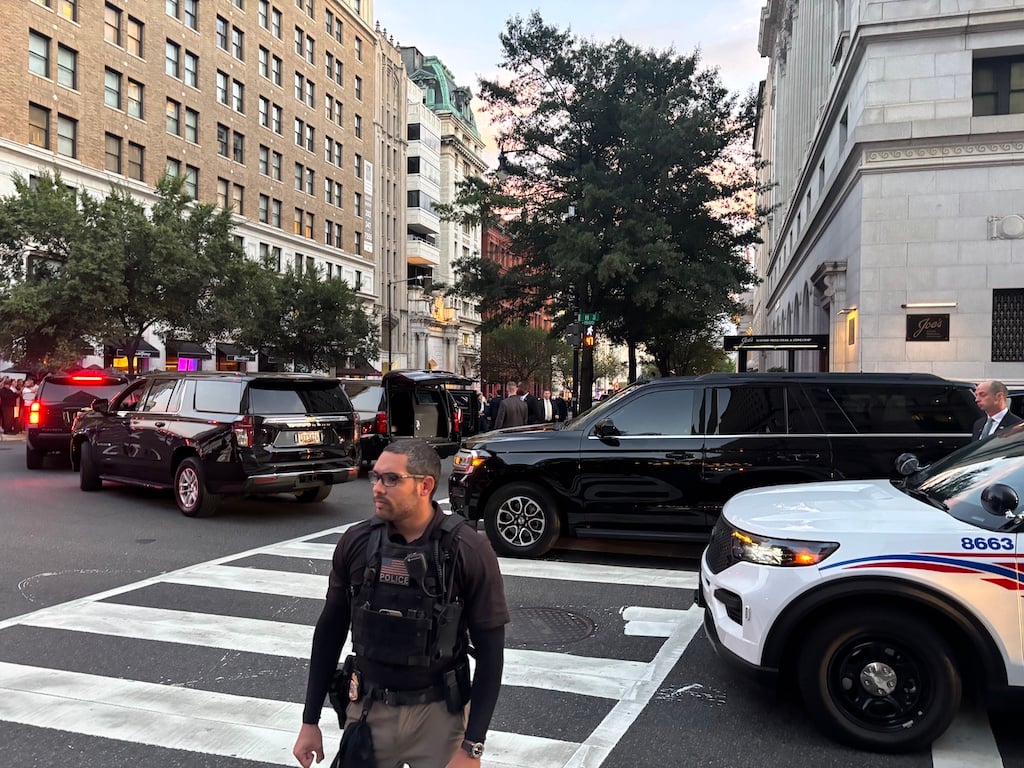National editor Ken Adelman (adelmank@aol.com) has been conducting What I've Learned interviews since 1988.
"The stock market goes up and sometimes down, but housing around Washington goes up or sometimes holds steady," Thelma Edwards says. "Even my grandson–only 16–is saving to buy his own house. I guess he got that through his genes."
Edwards knows Washington real estate like few others. One of the first local women to get a real-estate license, she almost single-handedly developed the office, apartment, and retail center of Friendship Heights in Montgomery County.
"Projections show astonishing growth in Washington for the next five years," she says. "Parts will grow even faster than today–especially in Virginia. Tysons Corner is no longer the outer boundary."
Edwards was born in Newington, Virginia, in 1917. Her father was a Baptist minister who later worked for the government. Her mother, a descendant of Thomas Jefferson, was a postmistress in Red River County, Texas, when she met her husband.
The youngest of eight children, Edwards attended a one-room grammar school without plumbing or electricity in Newington. She went to high school by train in Alexandria. Though her father attended college, Edwards didn't want to go.
"I never took a book home during high school," she says. "I wasn't interested in the discipline of knowledge. I wanted to go out and learn for myself." Years later, she found out she had attention deficit disorder.
She came to Washington to work with Hudson Supply & Equipment Company and met Billy Edwards, a pilot who taught her to fly. They married when she was 19 and had four children. Because he was a strong Catholic, she converted.
After getting her real-estate license in the 1940s, she began developing most of the high-rises in the Village of Friendship Heights, just over the District line near Chevy Chase. Her husband died in 1972 after 36 years of marriage.
In 1980, a local businessman, F. Winfield Weitzel, worked with her on the sale of the Willoughby apartment building. Two years later, he invited her to dinner. "I want to court you," she remembers him saying.
He did–for 14 years, eventually yielding to her wish that he convert to Catholicism. They married in 1996, when he was 87, and were happily married for six years before he died.
Of her four children, two died, like their father, from heart attacks–the eldest, William Jr., in his fifties and Terry at 33. Her surviving children are Geoffrey, who is retired in Florida, and Deborah Edwards, who is married to real-estate developer Larry Demaree and lives in Bethesda's Kenwood neighborhood. Edwards has nine grandchildren and eight great-grandchildren.
When not spending time with her new beau, Edwards is working with Virginia Wolf Productions on a film about her life and Friendship Heights. In the "pink house" on Willard Avenue, where she has an office, we talked about what she's learned.
How did you get started?
In the mid-1940s, I saw a house in Friendship Heights that I wanted. It was a rich man's house–two acres, beautifully landscaped, swimming pool, tennis courts.
We had been living in DC's American University Park, in a house we'd bought for $8,000. My husband asked how I was going to pay for the house I saw. I said, "I don't know. I'll figure it out and let you know." We didn't have two nickels to rub together. My husband was a sweet man, but he wasn't a money man.
Regardless, we bought it. We used our savings, and I realized that I was going to need to make some money. I started to sense that I could easily sell houses like the one I'd bought. So I did. I told my husband, "We're going to be millionaires someday."
I knew I'd never become a millionaire working for somebody else. The determination was in me; the education came through practical application. I applied for a real-estate license while raising four children, and I set up a home office. My goal was simply to make money. I make no apologies for it, even though women of my generation didn't do that.
I started by working for Raymond Dunn. Back then, you had to work with an established broker for three years before getting your license. I sold houses in Chevy Chase and made out like a bandit. I never took a house to sell unless I had an exclusive listing on it. I never took a house for sale that I didn't sell–except one, for a friend, and I misjudged that.
One day in the '50s, I spotted a big hole being dug. It was the excavation for a Woodward & Lothrop out here–one of the first department stores outside of DC.
I pictured Friendship Heights as a golden triangle, with our 108 houses in the triangle. It was a great place to live, and there was nothing between the District line and Bethesda, which itself had only a hardware and grocery store.
I started a citizens' association, which evolved into a long-range planning committee for Friendship Heights.
So I saw Woodies being dug at Wisconsin and Western. I was sitting in our yard on a hill 50 feet high, looking over the trees. I saw all the vacant land behind the dig.
I was talking with my sister-in-law, who worked for Geico. We decided that she should tell her boss about that land. She did, and soon Geico bought the land–26 acres across Willard Avenue, where it's still located.
Sometime thereafter I get a call from Frank Wetzel, who was with Eastern Shopping Centers in New York, telling me that Lord & Taylor was going up in the District, at Connecticut Avenue and Van Ness Street. All the high-fashion stores were along Connecticut Avenue then.
He and his boys came down to DC. I took them to the Montgomery airport and climbed into an airplane. My husband always had an airplane, even when we couldn't afford two cars. As a pilot, I took them on a ride.
I showed them the two streets. "You're looking for a regional store. Look down there at Connecticut Avenue. It doesn't go anywhere." Then we flew around here. "Now look out down at Wisconsin Avenue. It goes somewhere. It's at the crossroads–Wisconsin and Western. You need to be here!"
Lord & Taylor opened on Western in 1959. After that, Saks Fifth Avenue was an even easier sell, opening in 1964. I was the broker, with others, for all of this except Woodies.
Your role was to sell the land?
I brokered the deals. I did whatever needed doing. Geico actually bought that land. I was the selling agent–just like selling a house, only I was selling the location.
Retail never owns, unless it's like Woodies, and they eventually did sell. Mostly stores just lease the land, and back then it was for peanuts. Lord & Taylor is now owned by the May Company. It's still got more than 60 years to run on its lease–at less than $3 a square foot. They got a phenomenal deal. This is the most valuable land on the eastern seaboard.
How did the high-rise offices and apartments happen?
One day during all this, I was reading the local building code. It had three zones–residential, farmland acreage, and C-2, which permits 140 feet curb to curb.
I thought, "Bingo! That's where the values will come from. Forget about the houses." That C-2 allowed 16-story buildings–apartments, hotels, office buildings, whatever. But there was no market for building this up at first. I talked with Morris Cafritz, a big builder then, who was intrigued but worried. If he were starting out, he might give it a whirl, but he didn't want to take such a gamble in a brand-new market.
Nobody had paid attention to that part of the code. People were using the acreage here for parking lots. ••None of the county officials on the planning board or county council knew what was in my mind. Nor did the homeowners.
What was in your mind?
Converting these homes and land into what you see today. Out of reading the code, I got the vision of high-rise development in Montgomery County. If the code permitted it, I was going to do it.
I was in the right location at the right time. I lived here and knew it was becoming the most expensive part of the area. I saw Woodies' sales. And I knew all the houses around here. Of 108, I'd sold 39.
But the people wanted to stay in their houses.
Not after I talked to them and showed them how they'd benefit. They were buying their future.
How did you get them to sell their houses?
If you offer sufficient dollars, you've got a sale. With a high-rise, take the value of whatever it is per square foot on the ground level and multiply that by all the floors going up. I offered incredible amounts. One man had paid $12,000 for his house three years before. I walked in with a contract for $168,000. Now, would you hesitate?
To build the Irene apartment building, I had to get 12 houses and a two-acre tract in the back. Unless I had it all, I didn't have a deal.
How did Metro change things?
Metro originally planned one exit for the Friendship Heights stop back in the early '60s. I showed my plans to Cody Pfanstiehl, who was Metro's spokesman, and told him, "You can't do that. There's going to be a metropolis here." I opened an information center here to sell Metro and eventually got five portals.
What's coming to Friendship Heights?
Things are starting to change after 30 years of dallying. There's a plan for developing the Geico land with 500 townhouses. The county has deigned to permit a new shopping center, and Chevy Chase Land Company is well under way with the Collection, a shopping center of high-end retailers like Christian Dior and Louis Vuitton.
New England Development is in the process of building Wisconsin Place, with 400 rental apartments, an office building, a community center, a new Hecht's, a 50,000-square-foot Whole Foods, and boutiques. And development is planned around the Metro stop to generate more revenue. They're just starting streetscape–retail on the first floor and buildings above.
Tell me some of your tactics.
Here's one about the Willoughby, the building I'm living in now. In 1977, I wanted to buy it. So I went see the owner, Harry Helmsley–husband of Leona–when he came to town. He treated me like a peasant: "Yes, the building's for sale, but I don't know the price. Don't bother me."
That was an attitude I frequently got. I traveled in limited circles and wasn't always seen as a businesswoman. Quite often this worked to my advantage.
Did you buy the building?
Only when I later met his agent and pinned his ears back. In 1980, I called Helmsley and asked him to walk through the building with me. Next morning, I picked him up in my Rolls-Royce. All of a sudden, I was a big woman–I was something to him.
We had a deal before he left town. But Helmsley didn't sign the contract for the $35 million and started shopping the property elsewhere. I had to put a time limit on my deal, play tough. And yes, I bought it.
Talk about house prices in the area.
They're going up so fast it makes my head spin, because of staggering growth. Washington's becoming a city of worldwide importance, which was not the case when I started out. It's gone beyond the capital of the United States to the world capital.
So this is a good time to buy?
Never been better. Interest rates are low, and young people have more money than ever. I'd tell a young kid to beg, borrow, or steal to buy her own house.
I see more houses than ever being upgraded as well as built. Just today I was driving around a neighborhood with a dozen houses being remodeled or rebuilt–on one street.
What's most critical when buying a house?
Location. That's trite but true. Location sets the value you'll have–and hold.
What do you own now?
I don't own or manage anything. In 2003 I divested myself of all real estate.
What have you learned about life?
That it's wonderful being a woman. That being a mother is more important than being successful in real estate.
I've learned that money isn't the most important thing, but it buys down lots of trouble. Any life has its reverses as well as successes. Money helps you catch your breath between the two.
It's very important to maintain part of your childhood as you go through life. Keep aware of the purpose of life.
Which is?
To prepare yourself for the next life. I'm looking forward to it. I know it's going to be beautiful, because I've experienced the presence of God. One time I was up against the wall–with lots of property and bills but no cash. When I prayed, He was there. I actually saw Him. He looked just like in the pictures–all in white.
As my second husband was dying, he'd been unintelligible for three months. I normally visited him once a day, never after dinner. But one day after dinner, I went a second time. I don't know why. I found him sitting in the chair, slumped over, completely oblivious to anything. All of a sudden, he looked around. He focused on me, his eyes clear, and said, "I love you. Don't cry." He was going to a place I want to be.
How do you stay young?
Age hasn't meant much to me. I don't ever think of myself as an old woman. I've had the usual illnesses–cancer, a heart problem, and the rest–but so does everyone. Am I supposed to be different when I'm old? I don't feel different.
Last thoughts on what you've learned?
Above all, that life is beautiful. That there are wonderful people I have yet to meet. You never know what's around the corner. You never know when a handsome man will stand up in a restaurant and say, upon first meeting you, "You're elegant and beautiful."

